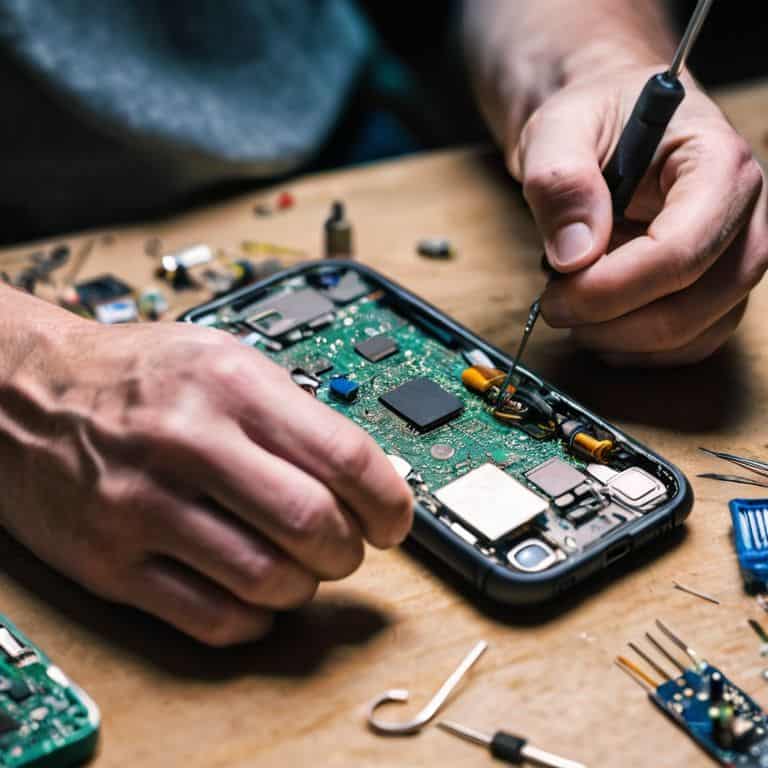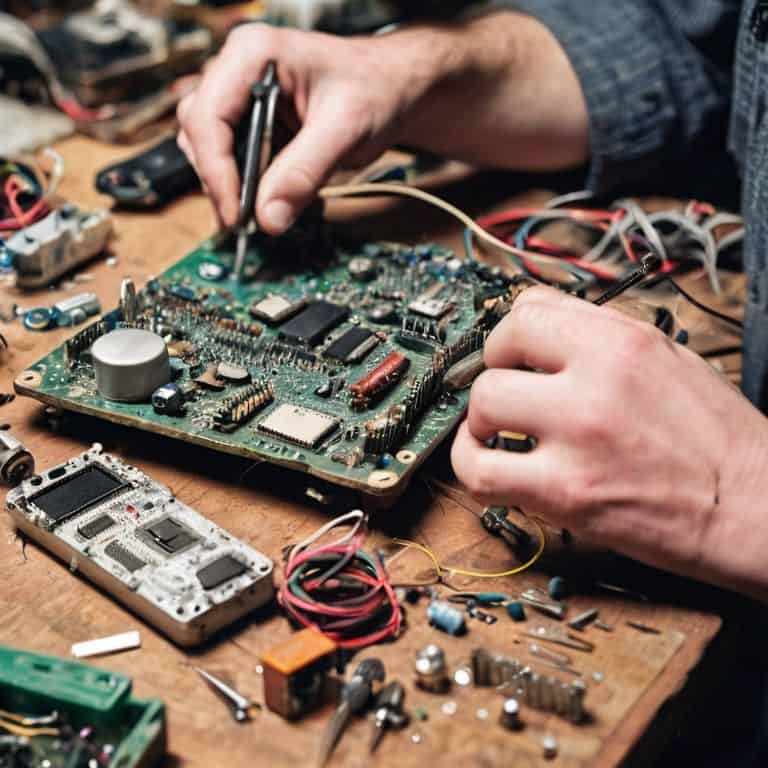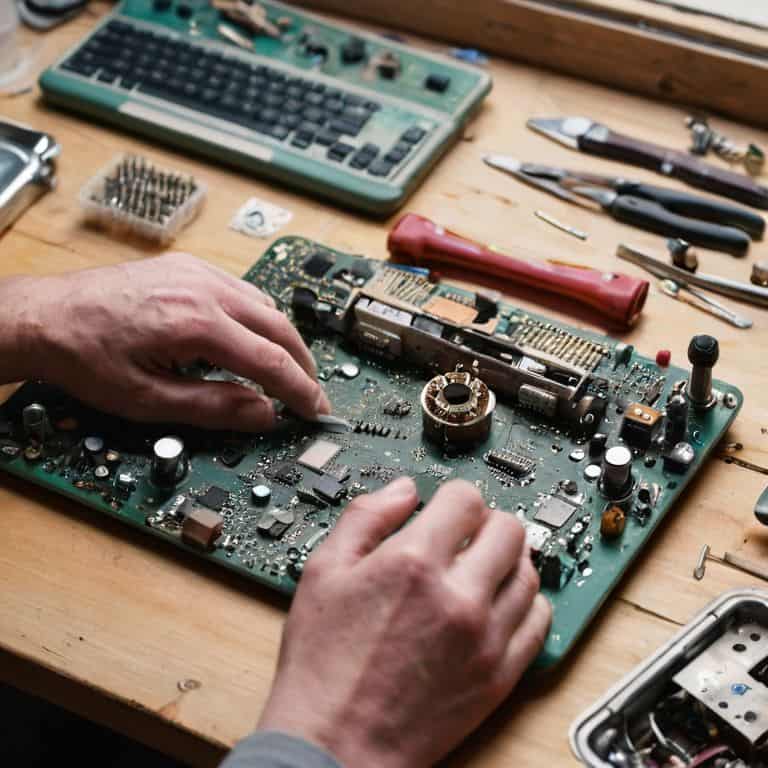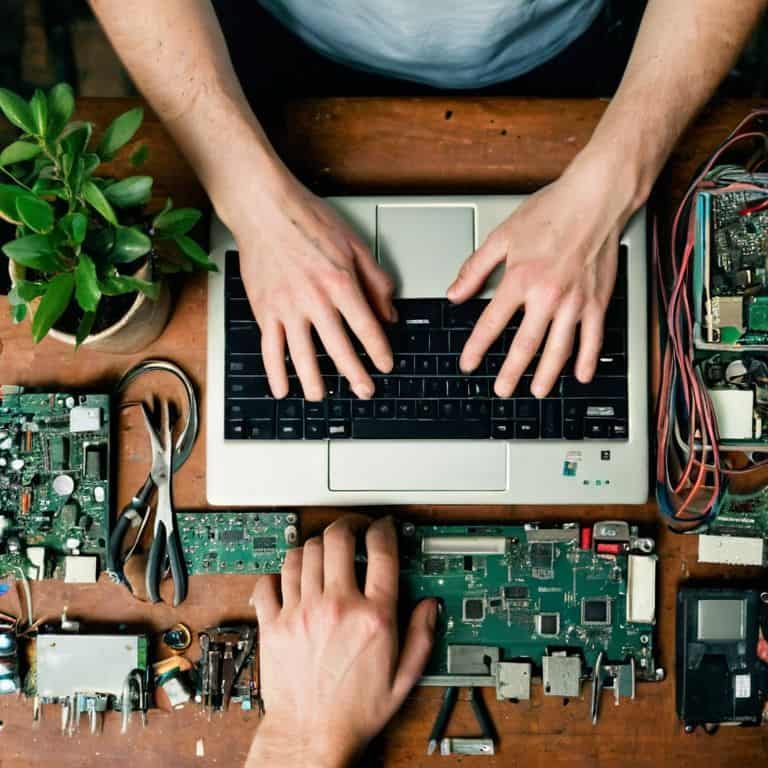I still remember the day I realized that the right to repair movement wasn’t just about fixing gadgets, but about taking a stand against the throwaway culture that’s choking our planet. I was in my small workshop, surrounded by the ticking clockwork of my hand-cranked automatons, when it hit me – the real issue isn’t that our devices are complex, but that manufacturers make them deliberately difficult to repair. It’s a clever trick to keep us consuming, but at what cost? The constant stream of “new and improved” models, the e-waste piling up in landfills, the feeling of powerlessness when our favorite gadget breaks and we’re forced to replace it.
As someone who’s spent years designing smart home devices, I’ve seen firsthand how the right to repair movement is not just a niche interest, but a necessary rebellion against the status quo. In this article, I promise to cut through the noise and give you a no-nonsense look at the movement’s goals, challenges, and triumphs. I’ll share my own experiences, from the thrill of repurposing old gadgets to the frustration of dealing with manufacturers who seem more interested in profits than people. My goal is to inspire you to join the conversation, to take control of your devices, and to demand a better future for our planet. Together, let’s explore the unintended uses of technology and discover a more sustainable, more humane way to interact with the gadgets that fill our lives.
Table of Contents
Rebel Against the Disposable

As I delve into the world of electronic device repair laws, I’m struck by the sheer audacity of manufacturers who design products with planned obsolescence in mind. It’s a clever tactic, really – create a gadget that’s intentionally difficult to fix, and watch as consumers are forced to buy new, perpetuating a cycle of waste and excess. But there’s a growing resistance to this approach, with sustainable consumption practices gaining traction among environmentally conscious consumers.
The environmental impact of e_waste is a stark reality that can no longer be ignored. As we continue to discard devices at an alarming rate, the consequences of our actions become increasingly clear. It’s heartening to see consumer rights advocacy groups stepping up to challenge the status quo, pushing for legislation that supports self-repair and reduces waste. By providing access to self-repair tutorials online, these groups are empowering individuals to take control of their own devices, rather than relying on manufacturers to dictate their lifespan.
In this spirit of rebellion, I’ve found myself drawn to the world of DIY repair, where individuals are fighting planned obsolescence with creativity and determination. It’s a small but significant act of defiance, one that challenges the notion that our devices are nothing more than disposable commodities. By embracing sustainable consumption practices, we can begin to shift the paradigm, one repair at a time.
Electronic Device Repair Laws
As I delve into the world of repair laws, I’m reminded that true sustainability starts with giving consumers the power to fix their own devices. It’s astonishing how often manufacturers make it difficult for us to repair our gadgets, forcing us to rely on their overpriced services or, worse, discard the product altogether.
The introduction of right to repair legislation in various countries is a significant step forward. These laws aim to make it easier for consumers to access repair information, spare parts, and diagnostic tools, effectively reducing electronic waste and promoting a culture of maintenance over mindless consumption.
Fighting Planned Obsolescence
As I delve into the world of repair and maintenance, I’m reminded of the planned obsolescence that plagues our industry. It’s a tactic where manufacturers deliberately design products with limited lifespans, forcing us to upgrade and buy new. But what if we could break free from this cycle?
The right to repair movement is all about empowering consumers to take control of their devices, to fix and maintain them, rather than simply discarding and replacing.
The Right to Repair Movement

As I delve into the world of repair and maintenance, I’m struck by the creative workarounds people have found to breathe new life into their gadgets. It’s a testament to human ingenuity and a desire for sustainable consumption practices. By embracing self-repair and modification, we’re not only reducing electronic waste but also pushing back against the tide of planned obsolescence. This shift in mindset has significant implications for the environment, as the environmental impact of e-waste is a growing concern that can no longer be ignored.
Consumer rights advocacy groups have been instrumental in promoting electronic device repair laws that give people the freedom to fix their own devices. These laws are a crucial step towards creating a more equitable relationship between consumers and manufacturers. By providing access to repair information and resources, we can empower individuals to take control of their technology and make informed decisions about their purchases. This, in turn, can drive demand for more sustainable and durable products.
The rise of self-repair tutorials online has also played a significant role in democratizing access to repair knowledge. These resources have enabled people to learn new skills and share their own experiences, creating a sense of community and cooperation around the idea of repair and maintenance. As we move forward, it’s essential to recognize the value of fighting planned obsolescence and embracing a culture of repair and reuse. By doing so, we can create a more circular and sustainable economy that benefits both people and the planet.
Environmental Impact of E Waste
The sheer volume of discarded electronics is staggering, and it’s having a devastating environmental impact. As we continue to upgrade and discard our devices, the world’s landfills and incinerators are filling up with toxic materials like lead, mercury, and cadmium.
This is where the right to repair comes in, as a potential solution to reduce electronic waste. By extending the life of our devices, we can decrease the demand for new, resource-intensive products and ultimately reduce the amount of waste that ends up in our environment.
Sustainable Consumption Practices
As I see it, adopting sustainable consumption practices is crucial in reducing electronic waste. This involves being mindful of our purchasing decisions and opting for products that are designed to last, rather than those with built-in obsolescence. By doing so, we can significantly decrease the amount of waste generated by discarded devices.
By embracing repair over replacement, we can also promote a culture of sustainability. This mindset shift encourages us to view our devices as assets worth maintaining, rather than disposable commodities. As someone who enjoys tinkering with hand-cranked automatons, I can attest to the satisfaction of breathing new life into old machines.
Join the Repair Revolution: 5 Tips to Take Back Control
- Know your rights: Familiarize yourself with local electronic device repair laws and understand what you’re entitled to as a consumer
- Choose products wisely: Opt for gadgets from manufacturers that support the right to repair movement and offer easy-to-repair designs
- Get hands-on: Learn basic repair skills and join online communities to connect with other DIY enthusiasts and stay updated on the latest repair techniques
- Support repair-friendly businesses: Encourage local repair shops and vote with your wallet by choosing companies that prioritize sustainability and repairability
- Advocate for change: Join the conversation and push for policy changes that promote the right to repair, reducing electronic waste and promoting a more circular economy
Key Takeaways: Empowering a Repairable Future
By embracing the right to repair movement, we can break free from the cycle of planned obsolescence and reduce electronic waste, promoting a more sustainable approach to technology consumption
The push for repairable devices and transparent design can lead to a significant reduction in environmental harm caused by e-waste, and it’s our responsibility as consumers to demand more from tech manufacturers
Ultimately, the right to repair is not just about fixing gadgets – it’s about reclaiming control over our relationship with technology and fostering a culture that values longevity, creativity, and innovation over profit-driven disposability
A Call to Action
The right to repair movement isn’t just about fixing gadgets – it’s about fixing a system that’s designed to keep us in a cycle of consumption and waste, and reclaiming our power as consumers to choose sustainability over obsolescence.
Javier "Javi" Reyes
Embracing a Culture of Repair

As I reflect on the right to repair movement, it’s clear that we’re at a crossroads. We can continue down the path of planned obsolescence, where gadgets are designed to be discarded and replaced, or we can choose a different route. The subsections on fighting planned obsolescence and electronic device repair laws highlighted the need for a shift in mindset. By embracing sustainable consumption practices and understanding the environmental impact of e-waste, we can work towards a more circular economy. It’s time for us to take control and demand more from the tech industry.
So, let’s rebel against the disposable and forge a new relationship with technology. One that values intentional design and recognizes the inherent worth of repair and maintenance. As we move forward, it’s essential to remember that the right to repair movement is not just about fixing gadgets; it’s about reclaiming our power as consumers and creating a more sustainable future. By doing so, we can unlock a world where technology serves humanity, not the other way around.
Frequently Asked Questions
How do I find authorized repair shops or trusted independent technicians who can fix my devices without voiding the warranty?
To find trusted repair pros, I recommend checking the manufacturer’s website for authorized shops or using online directories like iFixit’s Repair Directory, which lists independent technicians who can fix your devices without voiding the warranty.
What are some common devices or products that are often restricted from repair by manufacturers, and how can I work around these limitations?
Let’s face it, manufacturers love to restrict repair on gadgets like smartphones, laptops, and gaming consoles. To work around this, I recommend exploring DIY repair communities, like iFixit, or seeking out independent repair shops that specialize in bypassing these limitations.
Are there any existing laws or regulations that protect consumers' right to repair, and what can I do to support the expansion of these rights?
While there are laws like the Magnuson-Moss Warranty Act, they’re often limited. To support expansion, I recommend checking out the Repair Association and signing petitions that push for stronger right-to-repair legislation in your state or country.
